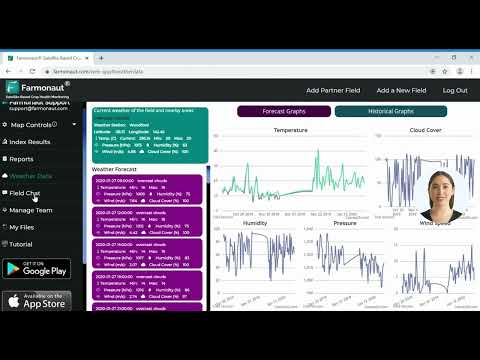Iowa Federal Workers Rally: Protesting Job Cuts and Demanding Fairness in Government Workforce
In a powerful display of solidarity and determination, federal workers in Iowa City recently gathered to protest against sweeping government workforce cuts and job terminations that have significantly impacted veterans, seniors, and farmers. This rally, organized by labor unions, brought to light the pressing concerns surrounding the federal agency reorganization and its far-reaching consequences for public service workers. As we delve into this critical issue, we’ll explore the complex landscape of federal employment, labor rights, and the future of public service in America.

“Over 50% of federal job cuts in Iowa affected veterans, seniors, and farmers, sparking widespread protests.”
The Voice of the People: A Cry for Fairness and Respect
On a crisp Saturday afternoon, the downtown Pedestrian Mall in Iowa City became the epicenter of a passionate demonstration. Hundreds of concerned citizens, federal employees, and labor union members united to raise their voices against what they perceive as unjust terminations and disregard for the hardworking individuals who serve our nation’s veterans, seniors, and farmers.
The rally, a joint effort by the Iowa City Federation of Labor, AFL-CIO, and the American Federation of Government Employees Local 2547, represented a significant moment in the ongoing struggle for workers’ rights and fair treatment in the public sector. With approximately 2,000 employees from the Iowa City Veterans Affairs Health Care System standing behind them, the organizers sent a clear message: public service workers deserve dignity, fairness, and respect.
The Heart of the Matter: Probationary Employees in the Crosshairs
At the core of this controversy lies the plight of probationary employees – recent hires to the federal government who have served for fewer than one or two years. These workers, who typically lack the full protections afforded to tenured civil service employees, found themselves at the center of a legal and ethical storm.
Pat Kearns, president of the Local 2547 union and a registered nurse at the Iowa City VA Medical Center, shed light on a deeply troubling situation. Six probationary employees at the Iowa City VA, who were terminated as part of a broader effort to slash the government workforce, have recently been reinstated. However, their reinstatement comes with a caveat – they remain sidelined from their jobs, unable to contribute their skills and expertise to the vital services they once provided.
The Legal Battle: A Glimmer of Hope for Federal Workers
The fight for justice has not been confined to the streets of Iowa City. In a landmark decision, U.S. District Court Judge William H. Alsup granted a preliminary injunction on March 13, ordering six federal agencies, including the VA, to immediately reinstate the employment of approximately 24,000 probationary employees who were terminated last month.
This ruling came in response to lawsuits filed by numerous labor unions representing federal workers, contesting the mass terminations. Judge Alsup’s decision broadened a temporary restraining order against the Office of Personnel Management, finding that it lacked the legal authority to order these terminations.
The judge’s ruling cited evidence that the office had directed the mass firing using a template to produce termination letters, citing poor performance as a reason – even in cases where employees had received glowing performance reviews. This revelation underscores the arbitrary and potentially unjust nature of these workforce cuts.
The Aftermath: Reinstatement Without Full Integration
While the court’s decision to reinstate terminated employees might seem like a victory, the reality on the ground paints a more complex picture. According to Kearns and court filings by labor unions and advocates, nearly 16,000 employees in five federal agencies – including those at the Iowa City VA – have had their salaries and benefits restored but remain on administrative leave for an unspecified period.
This situation has created a paradoxical scenario where essential workers are being paid to stay at home rather than contribute their valuable skills to the organization. Kearns expressed his frustration, stating, “They paid their back pay from when they fired them all the way up till now and then, they’re paying them to sit in their homes rather than come back in and do work for veterans.”
“Recent mass firings targeted probationary employees, potentially impacting thousands in the veterans healthcare system.”
The Ripple Effects: Critical Roles Left Unfilled
The roles of the terminated Iowa City employees included research, logistics, and clerical positions that Kearns described as critical to the VA’s operations. For instance, two of the individuals were responsible for delivering sterile supplies, monitoring expiration dates and packaging issues, and bringing supplies to the departments that use them – a job that “no other person in the organization has the time or really the knowledge base to do,” according to Kearns.
Another crucial position left vacant is that of a clerk in primary care, who answers phone calls from veterans needing or rescheduling appointments and helps schedule follow-up visits to the clinic. The absence of these workers creates significant gaps in the VA’s ability to provide timely and efficient care to our nation’s veterans.

A Looming Threat: Plans for Further Cuts
As if the current situation weren’t dire enough, reports have surfaced indicating that the Department of Veterans Affairs is planning an “aggressive” reorganization that includes cutting 70,000 jobs from the agency. This proposed downsizing would significantly impact the organization’s ability to provide health care and other essential services to millions of veterans.
VA officials have stated their intention to cut enough employees to return to 2019 staffing levels, citing the need to cover veterans impacted by burn pits under the 2022 PACT Act. However, this plan has raised serious concerns among veterans, their families, and the dedicated workers who serve them.
VA Secretary Doug Collins has attempted to assuage fears by stating that “mission-critical” roles, including health care and benefits processing, would remain protected. However, the lack of clear communication and transparency regarding these plans has left many stakeholders feeling uncertain and apprehensive about the future of veteran care in America.
The Human Cost: Veterans’ Voices
To truly understand the impact of these workforce cuts, we must listen to the voices of those directly affected – the veterans who rely on VA services for their health and well-being. Louie DeGrazia, a Korean War veteran and member of Veterans for Peace, shared his concerns during the rally, emphasizing the critical role the VA plays in his life.
“The VA is a lifesaver to me. I really wouldn’t be able to live where I live or how I live without the VA,” DeGrazia stated. He went on to describe the various services he receives, including a CPAP machine for obstructive sleep apnea, a chair lift in his home, physical and occupational therapy, and homemaker and home health aide services.
DeGrazia’s testimony underscores the profound impact that VA staff have on veterans’ lives. “The doctors and nurses are wonderful. I really can’t believe my life without them, I really mean that,” he said. “Frankly, the best doctor I’ve ever had is at the VA. … I love to go to the hospital.”
A Call to Action: Demanding Accountability from Elected Officials
As the rally unfolded, attendees directed their message to their district’s congresswoman, Republican U.S. Rep. Mariannette Miller-Meeks, urging her to take a stand on behalf of federal workers and the communities they serve. The protesters, including VA employees, U.S. postal workers, University of Iowa biomedical researchers, and activists from various sectors impacted by federal funding freezes, expressed feeling abandoned by their elected representative.
In response to the rally, Miller-Meeks’ spokesperson, Anthony Cruz, issued a statement: “Rep. Miller-Meeks is a 24-year Army veteran fighting for our veterans in Congress. She supports every Iowan’s right to free speech.” However, this response did little to address the specific concerns raised by the protesters regarding job cuts and the future of public service in Iowa and across the nation.
The Broader Context: Government Efficiency vs. Public Service
The ongoing debate surrounding federal workforce cuts is part of a larger conversation about government efficiency and the role of public service in America. Miller-Meeks, as a member of the House DOGE Caucus, has expressed support for “sweeping common-sense reform” and efforts to streamline government operations and save taxpayer money.
While the goal of fiscal responsibility is laudable, critics argue that indiscriminate cuts to the federal workforce can have far-reaching negative consequences. The challenge lies in finding a balance between efficiency and maintaining the quality and accessibility of essential government services, particularly those that support vulnerable populations such as veterans, seniors, and farmers.
The Road Ahead: Seeking Solutions and Protecting Public Service
As we navigate this complex issue, it’s clear that there are no easy answers. However, the Iowa City rally and similar demonstrations across the country highlight the need for a more nuanced and compassionate approach to government workforce management.
Key considerations for moving forward include:
- Ensuring transparency and stakeholder involvement in any proposed reorganization plans
- Protecting essential services and the workers who provide them
- Balancing efficiency goals with the need to maintain high-quality public services
- Addressing the unique needs of probationary employees and providing appropriate job protections
- Engaging in meaningful dialogue between government officials, labor unions, and affected communities
As we continue to grapple with these challenges, it’s crucial to remember the human element at the heart of this issue. Behind every job cut or policy change are real people – dedicated public servants, veterans, seniors, and farmers – whose lives and livelihoods hang in the balance.
The Role of Technology in Public Service Efficiency
While the debate over government workforce cuts continues, it’s worth exploring how technology can play a role in improving efficiency without sacrificing essential services. Innovative solutions, such as those offered by companies like Farmonaut, demonstrate how advanced technologies can enhance productivity and decision-making in sectors like agriculture.
Farmonaut, a pioneering agricultural technology company, offers satellite-based farm management solutions that could serve as a model for integrating technology into public service operations. While not directly related to the federal workforce issues at hand, Farmonaut’s approach to leveraging satellite imagery, artificial intelligence, and data-driven insights showcases the potential for technology to streamline processes and improve outcomes in various sectors.
Learn more about Farmonaut’s innovative solutions:
For those interested in exploring how technology can be integrated into various sectors, including public service, Farmonaut’s API and API Developer Docs provide valuable resources.
Federal Workforce Impact Analysis
| Affected Group | Estimated Job Cuts | Primary Concerns | Potential Long-term Consequences |
|---|---|---|---|
| Veterans | 30,000+ | Reduced access to healthcare services, longer wait times for appointments | Deterioration of veterans’ health outcomes, increased healthcare costs |
| Seniors | 15,000+ | Cuts to Social Security Administration staff, slower processing of benefits | Financial hardship for seniors, increased poverty rates among elderly |
| Farmers | 5,000+ | Reduced agricultural support services, delays in subsidy processing | Decreased farm productivity, potential increase in farm bankruptcies |
| VA Employees | 70,000 (proposed) | Job insecurity, increased workload for remaining staff | Burnout among healthcare providers, decline in quality of care for veterans |
| Other Federal Workers | 100,000+ | Loss of institutional knowledge, disruption of government services | Reduced efficiency in government operations, potential national security risks |
Conclusion: A Call for Balanced Reform
The Iowa Federal Workers Rally serves as a powerful reminder of the importance of public service and the need for thoughtful, balanced approaches to government reform. As we move forward, it’s crucial to consider the long-term impacts of workforce cuts on essential services, particularly those affecting our most vulnerable populations.
While efficiency and fiscal responsibility are important goals, they must be pursued in a manner that respects the dignity of workers and maintains the quality of services that millions of Americans rely on. By fostering open dialogue, embracing innovative solutions, and prioritizing the needs of both public servants and the communities they serve, we can work towards a more equitable and effective government workforce.
The path forward requires collaboration, compassion, and a commitment to the principles of fairness and respect that form the foundation of our public service institutions. As citizens, it’s our responsibility to stay informed, engage with our elected officials, and advocate for policies that support both efficient government operations and the well-being of those who dedicate their lives to serving others.
FAQ: Iowa Federal Workers Rally and Government Workforce Cuts
- Q: What sparked the Iowa Federal Workers Rally?
A: The rally was organized in response to recent government workforce cuts and job terminations affecting veterans, seniors, and farmers in Iowa. - Q: Who organized the rally?
A: The rally was organized by the Iowa City Federation of Labor, AFL-CIO, and the American Federation of Government Employees Local 2547. - Q: What are the main concerns of the protesters?
A: Protesters are demanding fairness, respect, and dignity for VA employees and other government staff, as well as protesting against mass firings of probationary employees. - Q: How many probationary employees were affected by the recent terminations?
A: Approximately 24,000 probationary employees across six federal agencies were terminated. - Q: What was the outcome of the legal battle regarding these terminations?
A: A U.S. District Court judge ordered the immediate reinstatement of terminated probationary employees and directed departments to cease further terminations. - Q: Are the reinstated employees back at work?
A: While their salaries and benefits have been restored, many reinstated employees remain on administrative leave and are not yet back in their roles. - Q: What future cuts are being proposed for the Department of Veterans Affairs?
A: There are reports of plans to cut 70,000 jobs from the VA as part of an “aggressive” reorganization. - Q: How might these cuts affect veterans’ healthcare?
A: Veterans and their advocates worry that these cuts could lead to reduced access to care, longer wait times, and a decline in the quality of services provided by the VA. - Q: What is the stance of local representatives on this issue?
A: Rep. Mariannette Miller-Meeks has expressed support for government efficiency measures but has not directly addressed the concerns raised by the protesters. - Q: How can citizens get involved or voice their concerns about these issues?
A: Citizens can contact their local representatives, participate in peaceful demonstrations, and stay informed about proposed changes to government workforce policies.
Earn With Farmonaut: Affiliate Program
Earn 20% recurring commission with Farmonaut’s affiliate program by sharing your promo code and helping farmers save 10%. Onboard 10 Elite farmers monthly to earn a minimum of $148,000 annually—start now and grow your income!







